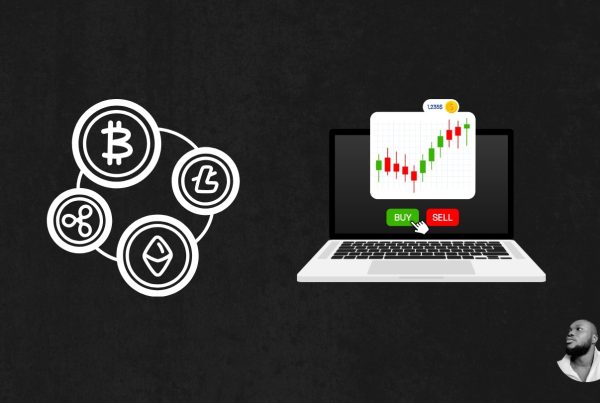Understanding Crypto Market Cap
The cryptocurrency market has grown exponentially over the past decade, attracting investors, technologists, and enthusiasts alike. One of the most critical metrics in this space is the market capitalization, often referred to as market cap. Understanding crypto market cap is essential for anyone looking to navigate the complex world of digital currencies. This article delves into what market cap is, how it is calculated, its significance, and its implications for investors.
What is Market Capitalization?
Market capitalization is a financial metric that represents the total value of a cryptocurrency. It is calculated by multiplying the current price of a cryptocurrency by its total circulating supply. The formula can be expressed as:
Market Cap = Current Price x Circulating Supply
For example, if a cryptocurrency is priced at $50 and has a circulating supply of 1 million coins, its market cap would be:
Market Cap = $50 x 1,000,000 = $50,000,000
Why is Market Cap Important?
Market cap serves several purposes in the cryptocurrency ecosystem:

- Investment Assessment: Investors often use market cap to gauge the size and stability of a cryptocurrency. A higher market cap typically indicates a more established and potentially less volatile asset.
- Market Ranking: Cryptocurrencies are often ranked by their market cap, providing a quick reference for investors to identify leading projects.
- Risk Evaluation: Smaller market cap cryptocurrencies may offer higher potential returns but come with increased risk. Understanding market cap helps investors make informed decisions.
Types of Market Capitalization
Market capitalization can be categorized into three main types:
- Large Cap: Cryptocurrencies with a market cap of over $10 billion. These are typically more stable and less volatile.
- Mid Cap: Cryptocurrencies with a market cap between $1 billion and $10 billion. These may offer a balance of risk and reward.
- Small Cap: Cryptocurrencies with a market cap below $1 billion. These are often more volatile and can present higher risks and rewards.
How to Calculate Market Cap
Calculating the market cap of a cryptocurrency is straightforward. Here’s a step-by-step guide:
- Find the current price of the cryptocurrency. This can be obtained from various cryptocurrency exchanges or financial news websites.
- Determine the circulating supply of the cryptocurrency. This information is usually available on the cryptocurrency’s official website or on platforms like CoinMarketCap.
- Multiply the current price by the circulating supply to get the market cap.
Market Cap vs. Other Metrics
While market cap is a vital metric, it is not the only one investors should consider. Other important metrics include:
- Trading Volume: This indicates how much of a cryptocurrency has been traded over a specific period, providing insight into its liquidity.
- Price Action: Analyzing price trends can help investors understand market sentiment and potential future movements.
- Supply Metrics: Total supply, maximum supply, and inflation rate can impact a cryptocurrency’s value and market cap.
Real-World Applications of Market Cap
Understanding market cap can help investors make informed decisions. For instance, during the 2021 bull run, many investors flocked to Ethereum (ETH) as its market cap surged, indicating growing confidence in its technology and use cases. Conversely, during market corrections, smaller cap cryptocurrencies often experienced more significant price drops, highlighting the risks associated with investing in less established projects.
Case Studies: Market Cap in Action
To illustrate the importance of market cap, let’s examine two notable cryptocurrencies: Bitcoin (BTC) and Dogecoin (DOGE).
Bitcoin (BTC)
As the first and largest cryptocurrency by market cap, Bitcoin has consistently maintained a market cap exceeding $400 billion. Its large cap status provides a level of stability and trust among investors, making it a go-to asset for many in the crypto space.
Dogecoin (DOGE)
Initially created as a meme, Dogecoin saw its market cap skyrocket in 2021, reaching over $80 billion at its peak. This rapid increase attracted both retail and institutional investors, showcasing how market cap can influence perception and investment behavior.
Market Cap and Investment Strategies
Investors often use market cap as part of their overall investment strategy. Here are some common approaches:
- Diversification: Investors may choose to diversify their portfolios by including a mix of large, mid, and small cap cryptocurrencies to balance risk and reward.
- Market Timing: Understanding market cap trends can help investors identify potential entry and exit points based on market sentiment.
- Long-Term Holding: Many investors focus on large cap cryptocurrencies for long-term holding, believing in their potential for growth and stability.
Challenges and Limitations of Market Cap
While market cap is a useful metric, it has its limitations:
- Price Manipulation: Smaller cap cryptocurrencies are more susceptible to price manipulation, which can distort market cap figures.
- Circulating Supply Variability: Changes in circulating supply due to token burns or new issuances can affect market cap calculations.
- Market Sentiment: Market cap does not account for investor sentiment, which can significantly impact price movements.
Future Trends in Crypto Market Cap
The cryptocurrency market is continually evolving, and several trends may influence market cap in the future:
- Institutional Adoption: As more institutional investors enter the market, the overall market cap of cryptocurrencies may increase, leading to greater stability.
- Regulatory Developments: Changes in regulations can impact market cap by affecting investor confidence and participation.
- Technological Advancements: Innovations in blockchain technology may lead to the emergence of new cryptocurrencies, affecting the market cap landscape.
FAQs about Crypto Market Cap
What is a good market cap for a cryptocurrency?
A good market cap varies depending on individual investment goals. Generally, large cap cryptocurrencies (over $10 billion) are considered more stable, while small cap cryptocurrencies (under $1 billion) may offer higher risk and reward potential.
Can market cap change rapidly?
Yes, market cap can change rapidly due to fluctuations in price and circulating supply. Events such as market news, technological advancements, or regulatory changes can significantly impact market cap.
Is market cap the only metric to consider when investing in cryptocurrencies?
No, while market cap is important, investors should also consider trading volume, price action, and supply metrics to make informed decisions.
How can I track cryptocurrency market cap?
You can track cryptocurrency market cap through various platforms such as CoinMarketCap, CoinGecko, and Bitrabo.
Conclusion
Understanding crypto market cap is crucial for anyone looking to invest in the cryptocurrency space. It provides valuable insights into the size, stability, and potential risks associated with different cryptocurrencies. By considering market cap alongside other metrics, investors can make more informed decisions and navigate the complexities of the digital currency landscape effectively.
For the latest news and price tracking in the cryptocurrency world, visit Bitrabo. Stay connected with me on social media: follow me on X, Instagram, and Threads.
Disclaimer: This article is for informational purposes only and should not be considered financial advice. Always conduct your own research before making investment decisions.
The Crypto Watchlist of the Week 🔎
Subscribe to receive expert-curated projects with real potential—plus trends, risks, and insights that matter. Get handpicked crypto projects, deep analysis & market updates delivered to you.


